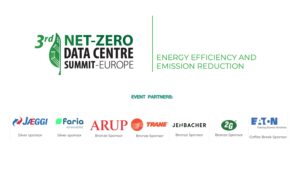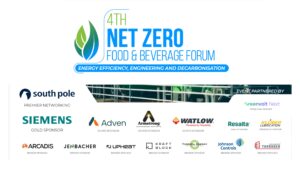Picture what’s happening in boardrooms across Europe. Teams sink huge amounts of time and money into a renewable energy PPA they believe will cut emissions in a meaningful way. Then, when the next ESG rating comes in, the company’s score suddenly drops. Nobody saw it coming. It feels like the rules keep changing without warning. That kind of shift shakes trust and creates a wider credibility problem for the whole system.
Instead of rewarding progress, the ratings often highlight confusing signals over real outcomes. Companies find themselves tripping over the scorecard instead of moving forward. When the tools meant to guide change become the obstacle, the path ahead gets murky. This piece looks at where ESG ratings go wrong, what drives those distortions, and how businesses can move through the noise.
The Black Box: Deconstructing the Methodological Divergence
The sticking point is simple: every ratings agency uses its method to decide a company’s score. For leaders, that lack of clarity doesn’t just frustrate; it piles on risk. This section looks at the rating practices that make results so inconsistent:
The “Materiality” Lottery: Why Your Biggest Green Investment Might Not Even Count
Much of it comes down to materiality. One agency may use a single lens, focused only on risks to the business itself, like a carbon tax. Another applies a broader view and weighs the company’s impact on society, such as water use. What this means is your huge investment in carbon efficiency can be massively outweighed by something like a water metric you weren’t focused on. This difference in philosophy is why your final ESG ratings can feel arbitrary and disconnected from the core strategy you have.
The “Forward-Looking” Fallacy: The Challenge of Valuing Future Impact
Most rating models are backward-looking in the sense that they are built on historical, audited data. A 15-year PPA is a powerful and legally binding commitment to create future green energy. However, when it comes to a rater, it is a complex contract that doesn’t quite fit neatly into last year’s report. This stands to be one of the major problems with ESG rating agencies. Many tend to give a similar score for this kind of leadership as they do for simply purchasing old energy certificates. This flaw in ESG ratings tends to make way for a disincentive for taking on bold, long-term projects that are needed in the transition.
The Geographic Nuance: How European Operations Can Be Misinterpreted
You must have noticed a strange paradox in the way geography is dealt with, often due to a “data availability bias”. Let’s say a factory in France, under a strict CSRD reporting framework, might transparently report a minor yet well-managed spill and get penalized. A similar factory in another country with lax disclosure rules might have no public data at hand. A rater’s automated model often interprets the absence of any data as “no issues found”. So, the result is that the more transparent European company gets a lower score. It tends to punish the very transparency the system should reward, and make fair ESG ratings a challenge.
The Innovation Paradox: Why First-Movers Risk Being Undervalued
Finally, the system can make the companies leading with new ideas punishable. The reason stands to be the fact that risk models are often created over established technologies. Moreover, imagine your firm pilots a revolutionary water recycling method. From the perspective of risk modeling, this new process is unknown with no long-term track record. So, the model can flag it as an operational risk, even though it has a huge sustainability breakthrough. As a result, instead of encouraging leadership, the newer model for ESG ratings can push companies toward safe/ conventional & less impactful practices unintentionally.
The Architecture of the Market: Structural Conflicts and Unintended Consequences
The methodologies of ESG rating agencies are not the only issue. The business models that drive the ESG ratings market have made way for a set of powerful incentives that can lead to confusing outcomes. So, we need to look at the commercial architecture that keeps the system in place:
The “Consult-to-Rate” Structural Conflict
A major issue structurally in the market is that of the consult-to-rate dynamic. You will find many firms that provide these complex ESG ratings, selling lucrative consulting services to help companies improve them. Furthermore, this creates what economists often call the information asymmetry. Moreover, the consulting arm acquires deep, non-public insights into your company’s plans in the long term and also its internal struggles. Even with a firewall, this makes a perception that the agency is rating you not just on public data, but with some kind of insider knowledge. This kind of dynamic can undermine trust in the impartiality of the system and is one of the most cited problems with ESG rating agencies.
The ESG Index Monopoly: The Power to Steer Capital
The influence of the ratings stands far more powerful than a simple score. The real power stands to be in licensing the data to make massive ESG investing funds & ETSs. Furthermore, this has made way for a passive investing feedback loop. There are billions being automatically allocated based on whether a company is in the index. Additionally, if an agency downgrades your company, it can trigger the automatic selling of these funds. So, this can make the downgrade a self-fulfilling prophecy that has an impact on the stock prices, regardless of the actual performance of your company. This has an impact on the ESG investing capital on a major scale.
The “Best-in-Class” Illusion: The Limits of Relative Scoring
Many professionals don’t realize the fact that ESG ratings are often relative, and not absolute. A company is only scored against its direct industry peers. The best-in-class approach leads to unusual outcomes. For instance, an airline is slightly more fuel-efficient than its competitors. They might receive a top ESG score and might find inclusion in a “green” fund. At the same time, a solar panel producer might end up with an average score and be excluded from these funds because its sector is highly competitive. So, for investors who genuinely want to fund solutions, this can go to a misleading side. Additionally, it creates a scenario where a portfolio can be filled with “ESG leaders” from not-so-sustainable industries.
The CSRD Compliance Gap: Why More Data Isn’t a Silver Bullet
The EU’s CSRD reporting framework is a major step in the way of data transparency. It standardizes the “what” you report. However, the directive does not regulate the “ so what,” which is the interpretation of the data. So, this boosts the power of the raters. Moreover, they are now the only ones that can claim to make sense of the new data tsunami for investors. So, while crucial for ESG investing, it doesn’t solve the base rating problems. It might even amplify the confusion as we see more data fed into the same black box. This makes accurate ESG ratings even more essential.
The Way Forward: A Manifesto for a More Credible System
So, what needs to be done? The aim isn’t to tear down the system but to make a better/more credible version of it. We need to go from a system of subjective judgment to one of verifiable proof. Hence, this section gives a manifesto for achieving credible ESG ratings:
Demand Dynamic Audits: Linking Ratings to Real-Time PPA Performance
Currently, we possess the technology to go beyond static, annual reports. You have leverage as a corporate leader. Furthermore, you can push for systems where verified energy data, fed directly from a grid operator/smart meter tied to your PPA, is combined into your ESG profile. As a result, it will provide real-time/auditable proof of performance. It also creates a direct/undeniable link between your actions & recognition. Additionally, it makes the entire process of CSRD reporting more impactful by showing real-world outcomes.
Champion Open-Source Materiality: Let Industries Inform the Process
Remember how at the start we talked about the materiality lottery? To fix this, industries need to step up. Imagine a consortium of, let’s say, European data centers making an open source materiality map that defines what is truly critical for the sector. This framework, made by experts on the ground, can definitely guide the raters. It would also make sure that major, impactful investments find proper value. Additionally, this is a major step in learning how to challenge a corporate ESG score in an effective manner, as you are giving a better standard to be judged against.
Build a “Glass-Box” Rating System: From Scores to Auditable Data
The future lies in going away from single letter-grade scores completely. Instead, we could make a transparent dashboard. This system could show the company’s raw CSRD reporting data in a standard format. It would also empower investors/stakeholders to use their analysis/values instead of depending on a subjective one-size-fits-all score. Furthermore, this makes the ESG investing process much smarter & tailored, ensuring efficacy for everyone involved.
Establish a “Fiduciary Duty to Scrutinize”: A New Mandate for Boards
Finally, there needs to be an evolution in corporate governance. Given the huge financial and reputational risks of flawed/volatile ESG ratings, boards now have a duty to their shareholders. This is to do more than just passively accept a score. Moreover, they need to scrutinize and question the methods behind them actively. Knowing how to challenge a corporate ESG score is no longer a good practice to have. It is rather a major responsibility of modern leadership & risk management
To Sum Up
The current system for ESG ratings is incomplete & a direct challenge for forward-thinking organizations in Europe. To rely on inconsistent scores is a strategy of hope rather than certainty. The current systems can undermine the massive investments in genuine decarbonization that leaders are fighting to implement. However, the frustration without a clear plan of action is just a sure shot way to failure.
The real question isn’t how the system is, but who will build its replacement first. A similar conversation with forward-looking ideas, case studies, panel discussions, and more is taking place at the 4th Net Zero Energy Sourcing & Power Purchase Agreements Summit on September 10-11, 2025, in Frankfurt, Germany. Join other leaders who are building the covenant of trust that will define how the next decade will look. See you there!




